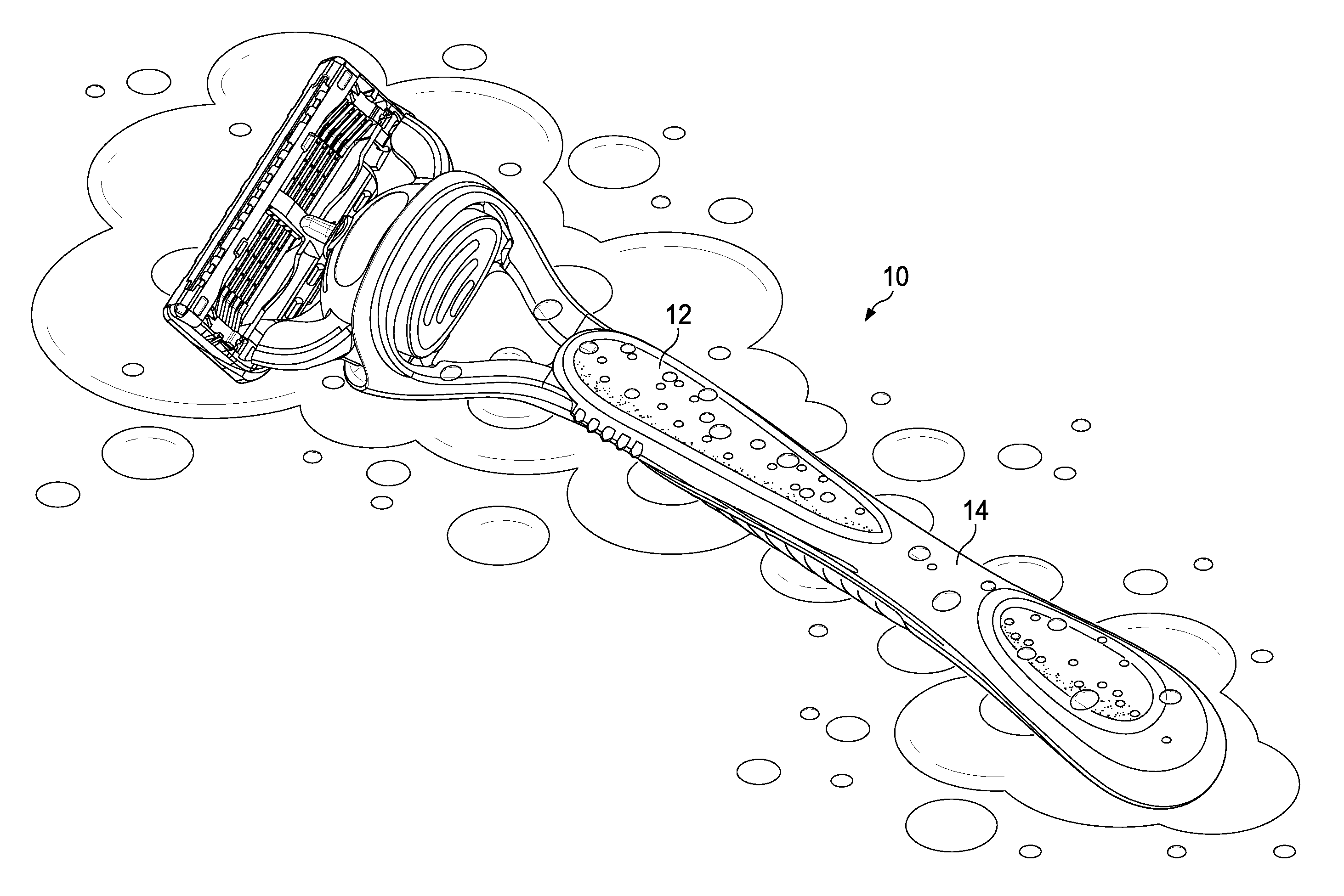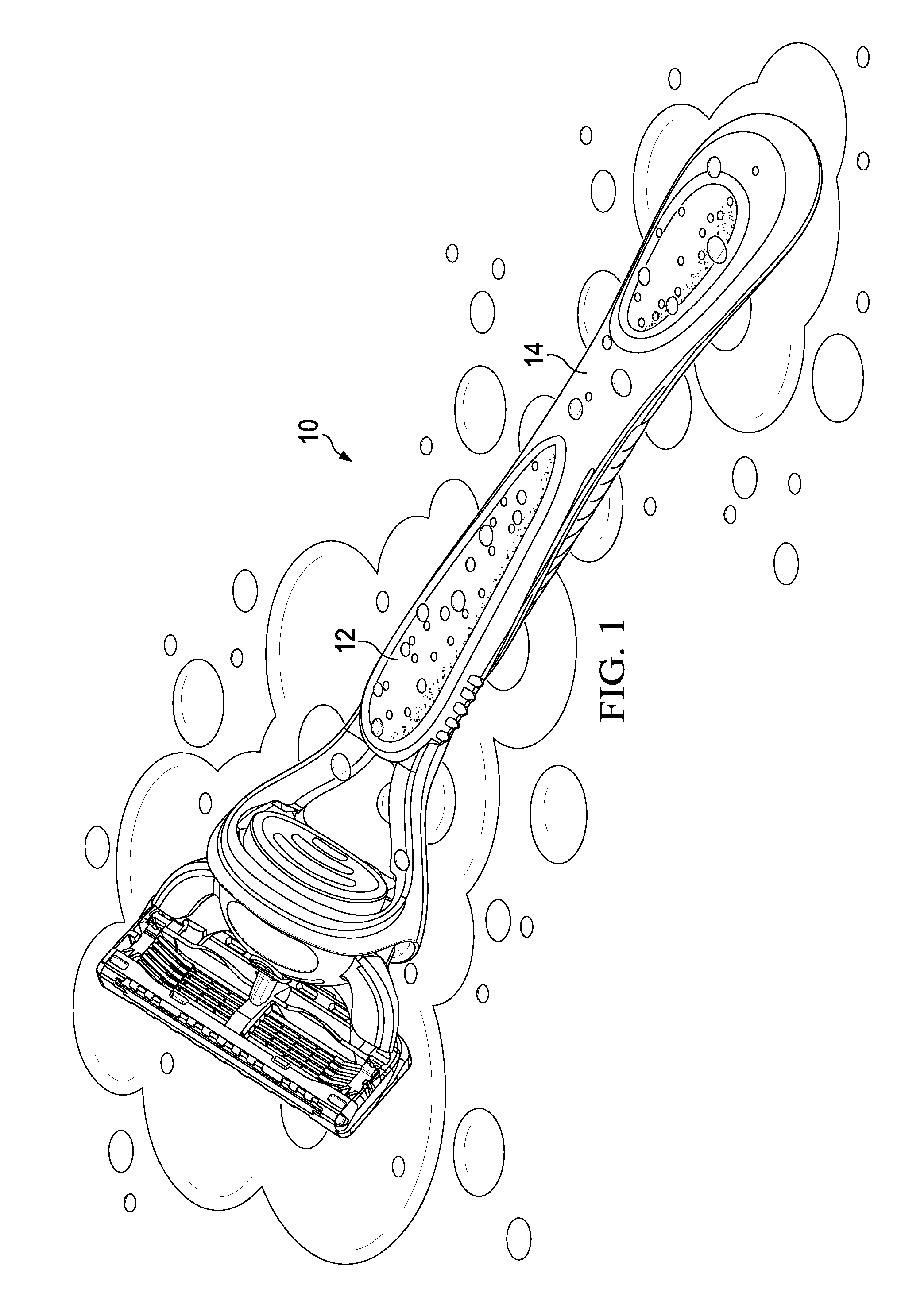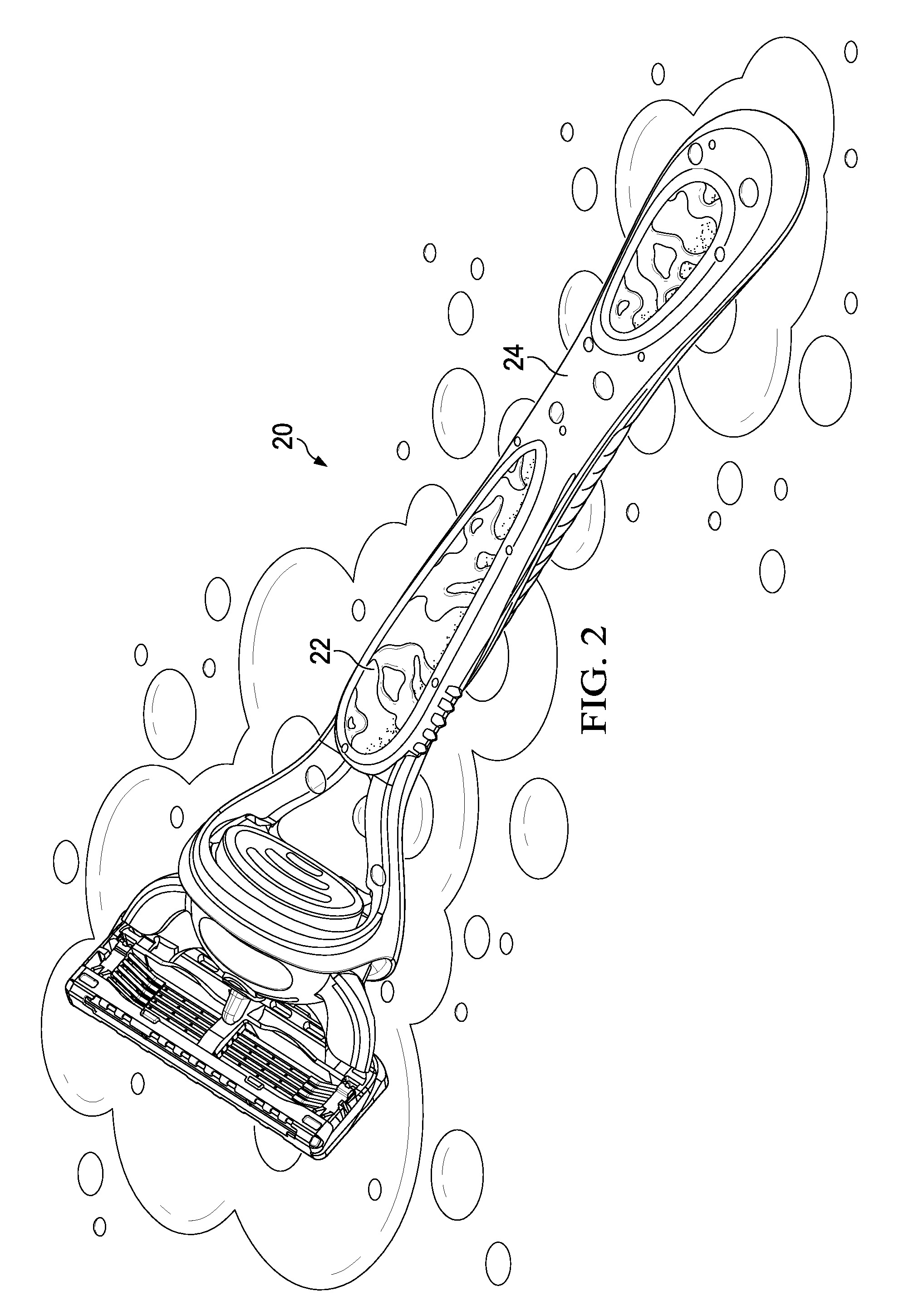Wet friction materials for hair removal devices
a technology of friction materials and hair removal devices, which is applied in the field of wet friction materials can solve the problems of poor engagement of thermoplastic polymers with skin surfaces, slippery known thermoplastic polymers for hair removal devices, and users often having to apply extra effort to grip the devices, etc., to facilitate water removal and facilitate water removal
- Summary
- Abstract
- Description
- Claims
- Application Information
AI Technical Summary
Benefits of technology
Problems solved by technology
Method used
Image
Examples
Embodiment Construction
[0020]Except as otherwise noted, the articles “a,”“an,” and “the” mean “one or more.”
[0021]As used herein, “hair removal devices” comprise any apparatus or device intended to remove hair, such as a razor (manual or powered) for dry or wet shaving, epilator, electric shaver, and combinations thereof.
[0022]Referring to FIG. 1, a known hair removal device 10 comprises a known thermoplastic elastomer 12 disposed on a portion of the hair removal device 10. In an embodiment, the known thermoplastic elastomer 12 is disposed on a substrate 14 of the hair removal device 10 in which the substrate 14 can be formed from a variety of materials, such as polymers (e.g., thermoplastic polymers, polypropylene, polyethylene, etc.), plastic, metal (e.g., diecast metal), etc. The known thermoplastic elastomer 12 is a black, high flow rate polypropylene-based thermoplastic elastomer with a hardness of Shore 35 A. The known thermoplastic elastomer 12 is of the styrenic multi-block copolymer family, speci...
PUM
| Property | Measurement | Unit |
|---|---|---|
| temperature | aaaaa | aaaaa |
| surface energies | aaaaa | aaaaa |
| surface energies | aaaaa | aaaaa |
Abstract
Description
Claims
Application Information
 Login to View More
Login to View More - R&D
- Intellectual Property
- Life Sciences
- Materials
- Tech Scout
- Unparalleled Data Quality
- Higher Quality Content
- 60% Fewer Hallucinations
Browse by: Latest US Patents, China's latest patents, Technical Efficacy Thesaurus, Application Domain, Technology Topic, Popular Technical Reports.
© 2025 PatSnap. All rights reserved.Legal|Privacy policy|Modern Slavery Act Transparency Statement|Sitemap|About US| Contact US: help@patsnap.com



